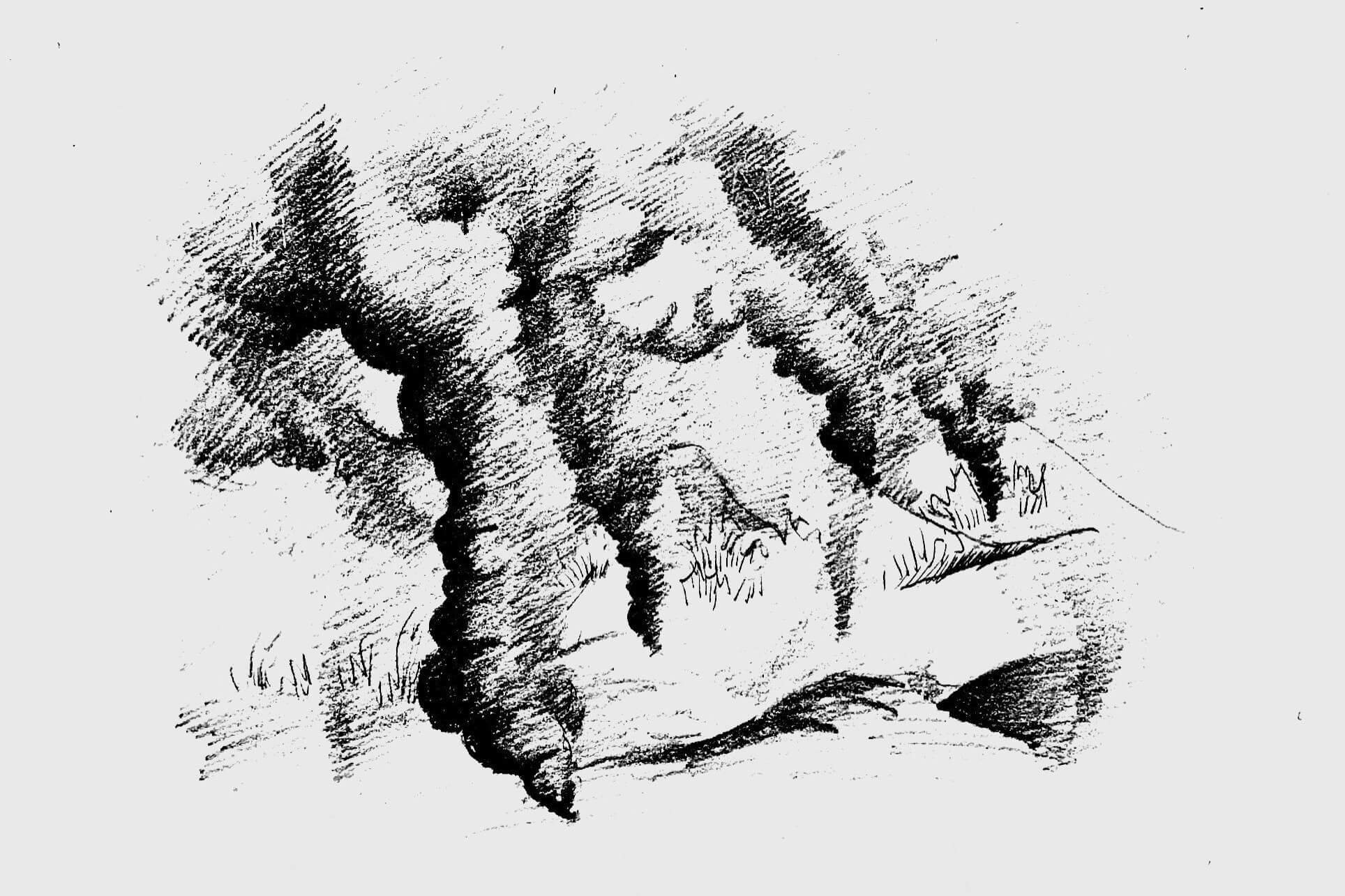Between Jan. 1 and Nov. 25 of this year, 876,167 acres of California burned in wildfires, according to Cal Fire. That is 274 percent more acres than 2017 and 377 percent more acres than the five-year average before 2017. Reread those percentages. Almost four times more of California is on fire than ever before. This year, California experienced the deadliest, largest and most destructive wildfires in its history.
The unprecedented nature of these fires is predominantly due to climate change. However, most media coverage of California’s wildfires has avoided drawing direct connections between the fires and climate change and instead reported on other equally important, but less pressing factors such as increasing wildland/urban interfaces, Trump’s distracting and inaccurate tweets and community resilience.
Climate change is an understood scientific fact, and the connection between climate change and wildfires is straightforward. Geology professor and climate change expert Darren Larsen explained how rising temperatures and decreasing snowpacks result in longer dry seasons and lower soil moisture content, which increase the likelihood of a fire. Climate change cannot light a match, per se — humans are doing that — but the effects of climate change are turning the landscape into kindling.
As the world’s record-keepers, informers and influencers of public opinion, news outlets have a duty and a responsibility to make this connection and write about it at every opportunity.
Wildfires are a critical and healthy trait of forest ecosystems, but the scale on which they’ve occurred in the past two years is abnormal and damaging to their environments. Once a wildfire burns through the dead and dried topsoil of the forest floor — a process that doesn’t harm the forest itself — it starts to burn the subsequent layers of soil, destroying the forest’s source of life, nutrients and plant growth. Once this happens, the forest takes considerably longer to recover. Research published in 2017 revealed that after 2000, as global warming rates increased, the proportion of forests that suffered from fires and failed to regrow doubled, leaving behind charred wastelands.
In 2018, Gallup found that only 64 percent of Americans believe that human-caused global warming is occurring, despite 97 percent of scientists agreeing that this past century’s climate-warming trends are a result of human activities. The political polarization of the topic has reached remarkable levels in the past couple of years. This is why journalists, more than ever before, need to draw these connections. The government is not doing enough to slow down global warming, so it falls on news sources to inform civilians and incite civic demand for change.
There is not an absolute absence of conversation around climate change’s role in the wildfires. Writing & Rhetoric professor, former Los Angeles Times Senior Editor, former Communications Director for the Sierra Club and Pulitzer Prize-winning journalist Robert Sipchen believes the frequency with which recent media has linked climate change and wildfires has increased. He said even five years ago, editors for Sierra Club publications were reluctant to make connections between climate change and its corresponding disaster because they could be too easily challenged.
“It was not considered either good science or good journalism … to make the sort of direct connections to specific events that people are making now,” Sipchen said.
Journalists are expected to follow a structure and format; they are limited by angle, word count and reporting guidelines, which contribute to their wariness in mentioning climate change. Despite the general increase Sipchen points out and journalistic limitations, news outlets are not doing their jobs in covering climate disruption as well as they need to.
For my senior sociology comprehensive project, I conducted research where I coded 81 news articles published between Jan. 2017 and Oct. 2018 that covered the California fires and connected them to climate change. I gathered 27 articles from three sources: The New York Times, the Los Angeles Times and the Santa Barbara News-Press. Only 21 of those 81 articles, or 26 percent, directly addressed climate change in relation to the fires. (The New York Times made the most references.) But 26 percent is not enough; journalists should be saying, “This fire is happening, and it’s as bad as it is because of climate change” in the majority of their wildfire coverage. When journalists actively ignore a fact they know to be true, they allow their readers to do the same, perpetuating a culture of science around the topic.
Larsen points out the symbiotic relationship between scientists and the media. Many scientists live in a bubble, a world of science, so they rely on the media to disseminate their findings. This then informs the public, which, in turn, elects politicians who are expected to make educated and smart decisions.
The public relies on the media to be the intermediator, the hand-holder, between them and information from scientists and politicians that is not easily accessible or understandable. Journalists need to grab the scientists’ hands and the laypeople’s hands, and have them hold each other in ceremonious union so the public and scientists of the world can look each other in the eyes and promise, ’til death do they part, to make changes to their personal lifestyles and demand change from their governments.
So please, journalists, officiate this marriage in holy matrimony. Maybe, just maybe, the process will convey the urgency of our human-caused changing climate, and we will demand better regulation from our government. And soon.
Tessa Sternberg is a senior sociology major. She can be reached at tsternberg@oxy.edu.
![]()



































